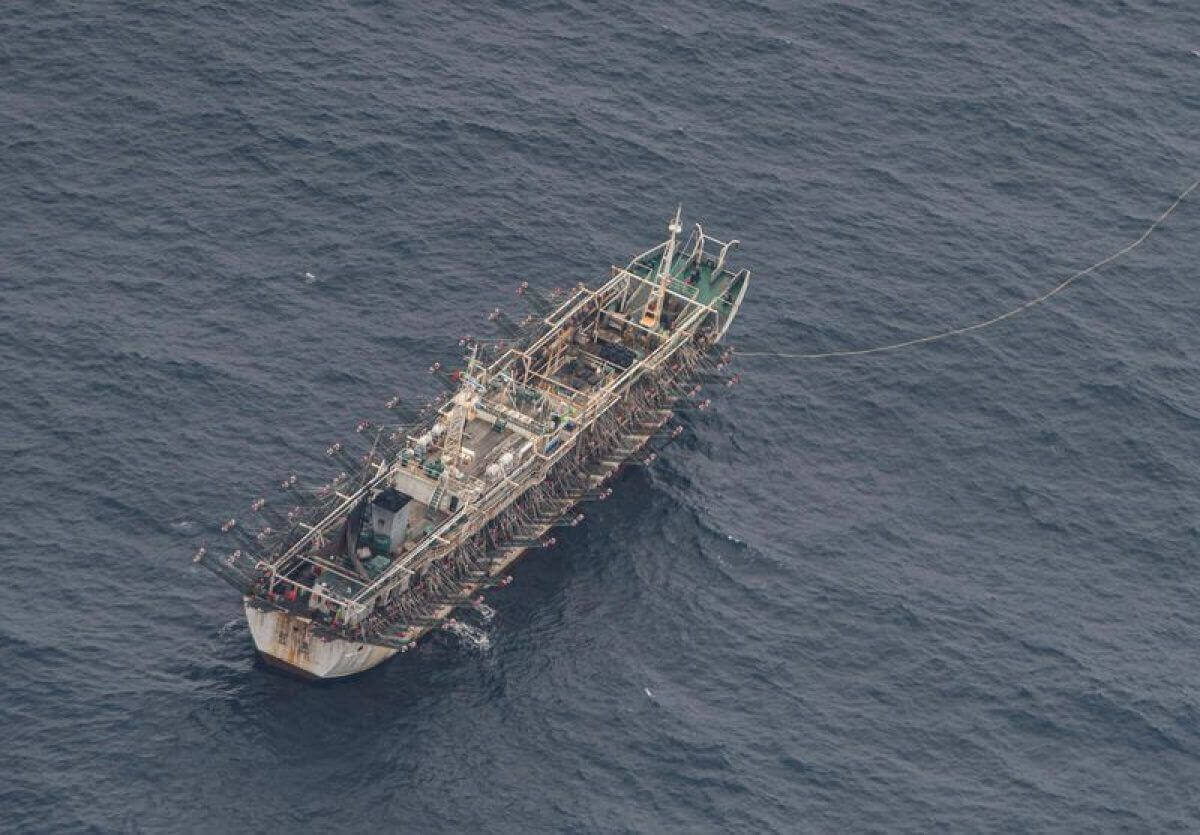The Peruvian Navy has been monitoring a fleet of roughly 250 Chinese vessels right outside its exclusive economic zone (EEZ) that were previously seen fishing for giant squid close to the Galapagos islands off the coast of Ecuador.
Defence Minister Jorge Chávez said, “Our Navy is making overflights ensuring there are no such vessels within the scope of our jurisdiction, which is 200 miles.”
In accordance with these developments, Coast Guard commander Rear Admiral Jorge Portocarrero said that the fleet was geolocated by an exploration aircraft and a patrol vessel, adding that they are scattered across the area. He reiterated the defence minister’s point of there being “no evidence of them having entered our maritime space”.
The US Embassy in Peru has waded in on this event by tweeting that Chinese vessels are known to avoid tracking and posited that they are either “dumping plastic” or “over-fishing”, both of which can cause “enormous ecological and economic damage”.
¡Alerta! Una flota de más de 300 barcos de bandera de China con historial de cambiar nombres de barcos y desactivar rastreo por GPS está frente al #Perú. La sobrepesca puede causar enormes daños ecológicos y económicos. Perú no puede permitirse semejante pérdida. pic.twitter.com/mYqaHXVhry
— Embajada EEUU Perú (@USEMBASSYPERU) September 22, 2020
Exigimos consecutivamente a las empresas de pesca oceánica a respetar el Derecho Internacional y obedecer estrictamente las leyes y normas pertinentes del Perú, y limitarse en operar en alta mar. Esperamos que el público peruano no sea engañado por las informaciones falsas.
— Embajada de China en el Perú (@ChinaEmbPeru) September 22, 2020
In response, the Chinese Embassy in Peru retorted, “We hope that the Peruvian public is not deceived by false information.” In fact, the Peruvian foreign ministry has also expressed its uneasiness at the statements made by the US, calling them “inaccurate”.
Peru is wary of pushing back too hard against China, as the East Asian giant is the largest consumer of Peruvian copper. Hence, Vice Minister Talavera communicated with US officials that Peru remains a “friend and partner” of both the US and China and urged the two superpowers to engage in dialogue to resolve their bitter dispute.
En relación a los tuits emitidos por la Embajada de los EEUU, relacionados a la presencia de una flota mayoritariamente china, que se encuentra comprobadamente fuera de las 200 millas, se le manifestó el malestar del gobierno del Perú por su inconveniente imprecisión. (2/4)
— Cancillería Perú🇵🇪 (@CancilleriaPeru) September 24, 2020
La Cancillería reitera su posición de permanente defensa de la soberanía y sus recursos naturales, así como su firme postura para prevenir, desalentar y erradicar la pesca ilegal. (4/4)
— Cancillería Perú🇵🇪 (@CancilleriaPeru) September 24, 2020
Peruvian fishing associations are less forgiving of what they see as Chinese encroachment. Squid makes up 43% of the country’s fishery exports, and the president of the National Society on Fishing, Cayetana Aljovín, said, “It’s an open secret that every year vessels mainly from China... are installed just at the edge of 200 miles off Peru to extract this resource.”
This assertion was confirmed by Coast Guard commander Portocarrero, who said that Chinese vessels have been active in these waters for years. In fact, three Chinese ships were captured in Peru’s EEZ in 2004.
Peru has sought to minimize the frequency of such events by requiring local and foreign boats operating off its coast to employ GPS and SISEAT satellite tracking systems. However, as the US embassy said, Chinese vessels frequently circumvent such requirements.
Although Peru has sought to downplay any perceived tensions with China, Ecuador took a much stronger stance after a fleet of roughly 260 Chinese vessels were spotted close to Ecuador’s EEZ near the Galapagos archipelago back in July.
At the time, Ecuadorian President Lenin Moreno said, “Immediately, and complying with my instructions, Ecuador's foreign ministry cordially but firmly warned the Chinese government that Ecuador would assert its maritime rights over the area against all countries without any distinction.”
Moreno added, “At the same time, Ecuador will be leading several consultation processes with neighbor countries in the Pacific, such as Costa Rica, Panama, Colombia and Peru, to combat illegal, unreported and unregulated (IUU) fishing in the area and future similar.”
However, as Ecuador’s minister of defence Oswaldo Jarrín said, “At no stage did any foreign vessel entered any of our EEZs.” In fact, several commentators have analyzed that China is taking advantage of a loophole wherein it is fishing in the ‘corridor’ between Ecuador’s mainland and the Galapagos islands’ EEZ, which is considered ‘international waters’.

